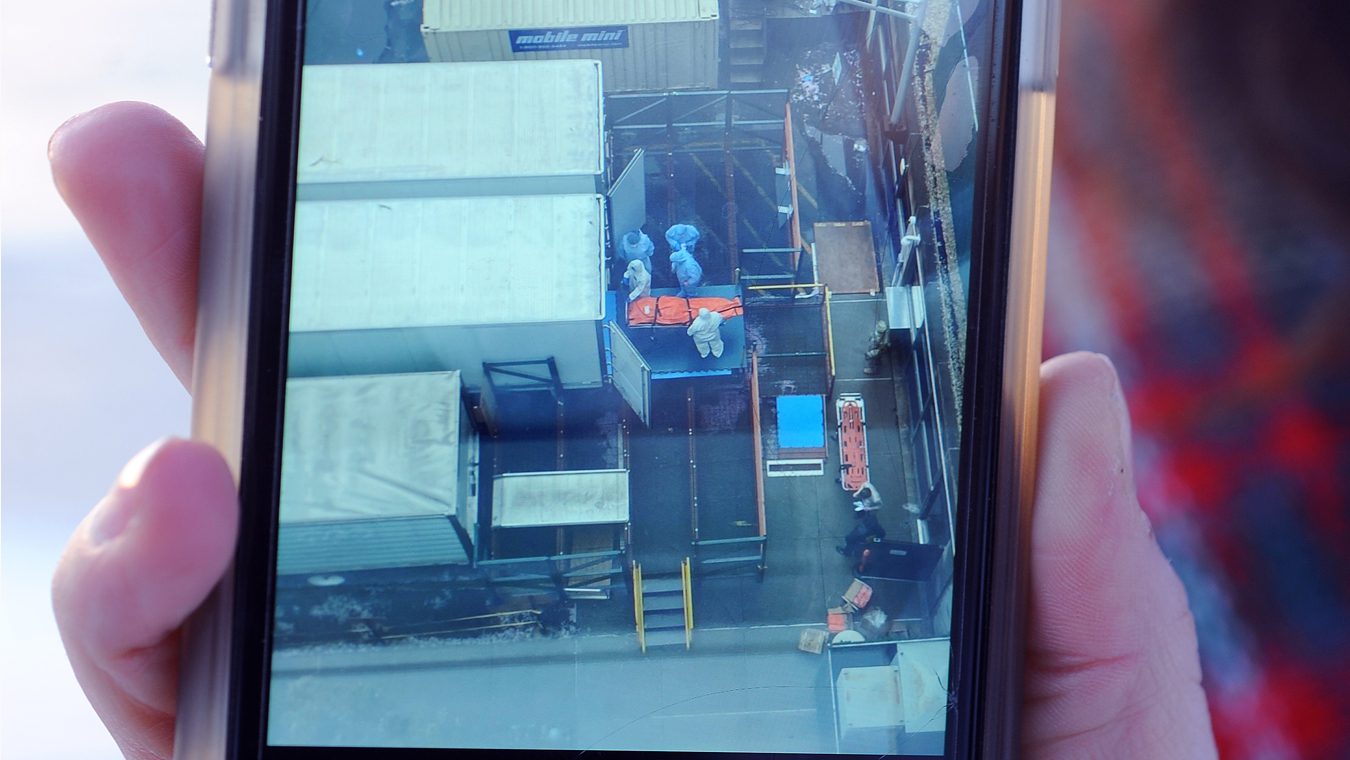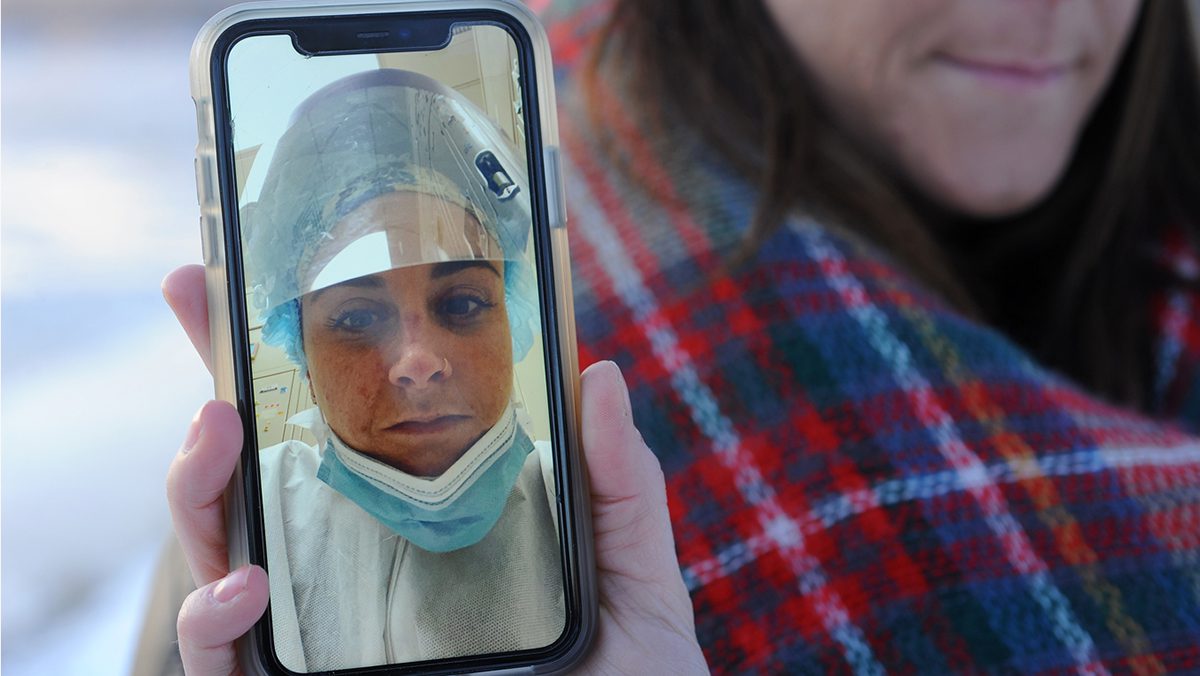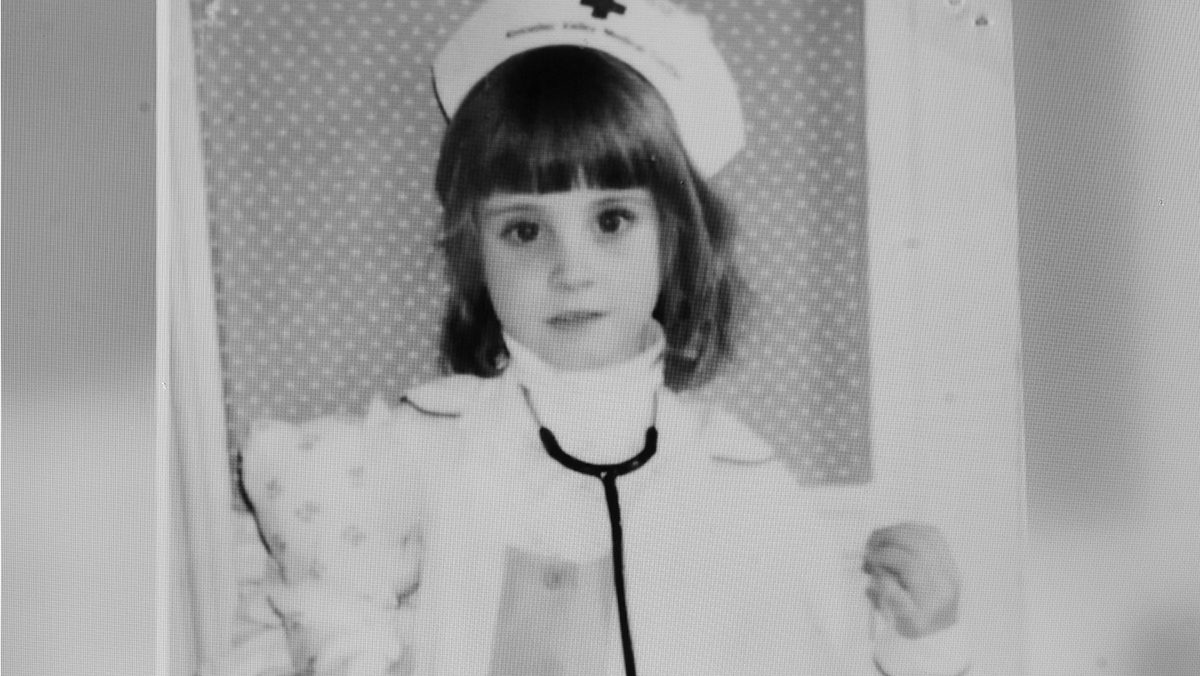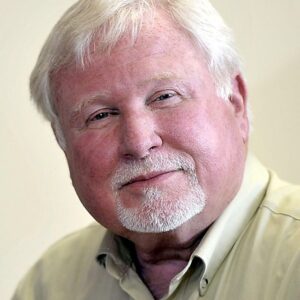The memories of seven long weeks working as a traveling nurse in a New York hospital settle in Julie Byron’s mind almost daily. Scenes of patients fighting for life and losing to death. The sweet moments of joy and numbing emptiness of sorrow. The fatigue.
Byron, a 33-year-old who grew up in Hallowell, had no idea what awaited when she first walked through the doors to Coney Island Hospital in Brooklyn that day in mid-April, nine months ago. She was one of thousands of nurses and nurse practitioners who came to New York to help their overwhelmed sisters and brothers fight the first surge of COVID-19 in the late winter and spring of 2020.
The scope of the early pandemic was just revealing itself, calling for quick decisions and quicker reactions. For most healthcare providers it was an experience like no other.

“I’d like to say it didn’t affect me,” said Byron, “but it did. I find myself rewatching videos I had recorded, looking at pictures and remembering the feelings of being there. I believe it made me a better provider for my patients.
“But the memories do haunt me some days. Overall it was the most humbling, challenging, rewarding experience I have ever had.”
Would she go again? Fellow traveling nurses at Coney Island Hospital who became friends, bonding over their shared experience, have encouraged Byron to consider coming to Texas.
“Clearly I am better prepared,” said Byron. “I would get on a plane tomorrow and go help again.”
In New York, Byron was paid the Federal Emergency Management Agency (FEMA) contract rate of $10,000 a week. That rate has increased to $12,000 a week because the desperate need for nurses has increased. The money is eye-opening but Byron feels she has an obligation to MaineGeneral Medical Center in Augusta, her past and current employer. She passed her board exams to become a General Surgery Nurse Practitioner in July, a month after returning from New York. She’s been in her new job for less than a year.
This past Monday night she sent a text to The Maine Monitor. “Thought I’d give you an update. I am leaving tomorrow for a 4-week contract in El Paso. I am keeping my job at MGMC but taking a leave of absence.”
Byron learned earlier that day that Krucial Staffing, a disaster relief company with a FEMA contract, had posted openings on its website. Hospitals in Texas urgently needed more healthcare providers. Krucial, based in Kansas and created when a tornado ripped apart Joplin, Mo., in 2011, was the company that put Byron in New York.
“I decided I wanted to go back,” said Byron in a follow-up text. “So I am going. My boss here has held my job. I couldn’t pass up the money and helping with COVID.”
This time she has a better idea of what awaits. She was vaccinated for COVID-19 when the vaccine became available in Maine. Her family and friends understand her personality mix of compassion, duty, spirituality and practicality. She was good to go.

In New York, Byron and her new colleagues worked 12-hour shifts, leaving their midtown Manhattan hotels at 6 a.m. for buses that delivered them to hospitals and medical centers filled with COVID-19 patients. Byron returned at 9 p.m. to her hotel room on the 21st floor of the Marriott Marquis in Times Square.
She would peel off her N95 facemask, get out of her scrubs, take a few deep breaths and get ready for the next long day. Night after night, week after week. Her original deployment, as Krucial Staffing calls it, was for 21 days. Byron extended it to 47.
Byron was assigned to Coney Island Hospital, a 371-bed acute care hospital serving some 900,000 residents in south Brooklyn. Byron and her fellow nurses were thrown into a maelstrom. The pandemic was too new then. Science and medicine were racing to catch up to increase the odds of patient survival.
At Coney Island Hospital, Byron worked in medical units and intensive care. “My duties were everything from passing food trays to taking vitals to bagging bodies. The shifts were intense. Watching people suffer and die in front of your eyes was one of the hardest, most intense things I’ve ever done. The hardest thing was I knew we couldn’t save them once they had gotten to that point.
“I became a nurse to help people get better and I knew we would not make some of these people better. That reality was hard to grasp at first. There were days when just holding a patient’s hand had to be good enough. It was heartbreaking. It was emotionally exhausting and physically draining.”
Byron said the hospital was staffed mostly by traveling nurses such as herself. “Their staff had gotten sick themselves or had chosen not to come to work due to the dangers.”
Very little in Byron’s relatively short nursing career could match this crisis. Prior to New York, much of her experience was at the Harold Alfond Cancer Care Center in Augusta. She was a treatment room nurse. “I hung chemotherapy and biologics, and monitored patients throughout their daily treatments,” she said.
Yes, some of her patients died. But decades of research have given caregivers and patients the tools and hope to at least hold the disease at bay. This coronavirus, as the world discovered, was entirely different.
Byron left oncology to train to become a nurse practitioner in critical care, graduating on March 17. “I could not sit for my boards because COVID happened and closed all the testing sites,” she said.
Then the pandemic hit hard in New York. “I remember watching the nightly news, and seeing these nurses crying and pleading for help. I remember thinking if that was happening in my state, I would be so grateful to have help coming. At that moment I had this intense desire to help the staff and patients who, honestly, were in a war zone.”
Byron contacted Krucial Staffing. The process, said Byron, was speaking to a Krucial representative on a Monday and being told to be in New York by Wednesday. Byron had an unrestricted nursing license. She was ready, even as she tried to imagine what was ahead.
“I was terrified to go. I knew I had a calling to be there but I also had zero clue what I was walking into. I had no idea what hospital I was going to work at, when I was going to officially start or any details except for what hotel I’d be staying at, what color scrubs I needed to bring and what documentation I needed to show.
“I was scared but invigorated at the thought of helping.”
That Byron had some life experiences away from Maine, and a strong family and network of friends probably stiffened her resolve. Her father, Mark Byron, worked for the Maine Women, Infants and Children Nutrition Program for about 30 years. The federally funded program took him around the country and overseas. Sometimes his daughter and one of her friends would accompany him.
“I worked with several Native American tribes in Oklahoma,” said Mark Byron. “I think perhaps my experiences working with people less fortunate may have been why (Julie) chose a field to help people.”
Julie Byron’s mom, Ann Hichborn Byron, is a longtime administrative assistant with the Maine Dartmouth Family Medicine Residency in Augusta, working with new resident physicians. Julie Byron was about 12 when she came under the care of Persis Hope, a new nurse practitioner at Maine Dartmouth.
“She was an amazing NP,” said Julie Byron. “She was not only a wonderful person but the most fantastic provider. I knew I wanted to be that same type of person with my own patients someday.”
Hope, still an NP and now 67, almost broke into tears when she heard Byron’s comment. “When you get to be my age and learn you inspired someone . . . I can’t tell you what that means.”
Then Hope laughed. She saw the imp in Byron at 12. One of her favorite photos in Ann Byron’s office is of Julie with a gleam in her eye that might foretell her propensity for mischief. To be around Julie Byron was to be around fun.

Yet the little girl who once dressed as a nurse for Halloween and now says she always wanted nursing as a career, took a few detours. After graduation from Hall-Dale High in Farmingdale, she enrolled at Concordia University in Montreal, majoring in political science. Ann Byron said her daughter got A-plusses in socializing but not in the courses that counted. After two years, Julie Byron left school.
She was a nanny in the Washington D.C. area. Back in Augusta, she moved into banking, where she had responsibilities but no passion in her work. She understood she would find that only in nursing, especially in oncology and critical care.
An aunt, whose nursing specialty was post-cardiothoracic surgical care at Orlando Regional Medical Center in Florida, told Julie a good nurse is someone who truly cares for patients, especially when they’re scared, alone and vulnerable. Terri Byron sent her niece a video illustrating that.
That’s me, said Julie Byron to herself. She was back on her life’s path.
When Byron decided to head to New York, her family and friends were concerned, if not worried about her safety. But Ann and Mark Byron taught their two daughters — Ellie, the older sister, is a school teacher – to own their decisions and consequences. Julie Byron, despite her apprehensions, was determined to leave the relative safety of Maine.
“Everyone was very supportive,” said Byron. “Scared for me but very supportive.”
Johnna Palleschi, a nurses’ assistant at the Harold Alfond Cancer Care Center and a good friend, gave Byron a can of pepper spray as a going-away present. It may have been a gag but the message was serious: if you get in harm’s way, take care of yourself.
Byron packed scrubs, shoes and nursing equipment into a couple of suitcases. She threw in some regular clothes in the off chance she could go anywhere other than Brooklyn and the hospital. She flew out of Boston to LaGuardia Airport in New York, the only passenger on the flight.
At her hotel, Byron looked out the window, directly at the tower that features the glittering ball dropping on New Year’s Eve. For much of her 47 days, Byron saw virtually no one when she looked out that window. A shelter-in-place order was in effect.
“When you think of Times Square, you think of hustle and bustle, people shoulder-to-shoulder. There was none of that. It was desolate, quite eerie.”
She did see police on street corners. Occasionally, when she left her hotel to eat, she was approached by panhandlers. She didn’t use her pepper spray.
Weeks, maybe a month before her arrival, nurses complained of inadequate personal protective equipment at the hospitals. Byron said she had no issues. “I had a new N95 (mask) every day. Wore the same (face) shield the whole time, cleaning it daily. New shoe covers daily and a new ‘bunny suit’ every week.”
Previously there were complaints of individual caseloads approaching 18 to 20 patients. Byron said she had six to 10 patients outside the intensive care unit and “sixish” in the ventilated ICU. “This got better as more nurses joined the force.”
She did not encounter another nurse from Maine at the hospital, hotel or anywhere else in New York. She felt like a “lone soldier” from Maine and marveled how easily nurses with other specialties worked together. They became family.
At first, Byron had little interaction with her patients. They were too sick to speak or were intubated. “I spent a lot of time talking to them, rubbing their foreheads. I did a lot of reassuring that I was not going to leave them.
“Sometimes just hearing someone talk mindlessly can help. So I talked about where I was from, what my hometown looked like and what medications I was giving them. I just talked.”
As patients improved they would talk back, to Byron’s delight. Palleschi, her friend back home, described Byron as the bright light in any room, at any social event. “It was like, everyone knew Julie and everyone wanted to talk with her. She’s so genuine, so selfless. She draws people to her.”
At Coney Island Hospital, Byron met one patient she will never forget. “She was in her 80s. Russian, I believe. She tried to pay me whenever I helped her. (Her) name was Julia. We laughed that we both shared the name similarity.
“She was one of the patients I got to see get better and get out of the hospital. She offered for me to stay in her extra bedroom. She was so sweet. I’ll remember her for many reasons, but the main reasons are the great conversations we had and the absolute gratitude she expressed.
“The thought of her and our connection made many bad moments tolerable.”
Byron said she handled the constant work because that was part of her job. “It sounds strange but there was no downtime.” Or very little. She did manage a few runs to clear her mind.
“There was no time to feel tired. We were on all the time. I honestly didn’t realize how tired I was until I stopped working.” It was then that she also felt how much emotion she was carrying.
After 21 days, Byron extended her deployment. “NYC was not in a better place. If I had left I would have felt like I was abandoning not only the patients but the staff I had grown to be family with. I didn’t want to leave until the job was done or at least in a better spot.”
After 47 days, Byron left with mixed emotions. “I felt done. I felt exhausted and ready to move on. I felt pride for what I had done and the help I provided. But I also felt guilt. I was leaving people behind, and I should be staying and continuing to fight the battle.”
Byron is very aware of the climbing death count from COVID-19 and the stress on the nation’s healthcare system. She’s thankful she’s in Maine, where hospitals are coping with increased hospitalizations.
“I want life to be normal again, just like the rest of the country. I, too, hope for a reality where masks are a thing of the past. It does infuriate me when people say COVID is a hoax and people aren’t even dying from it.
“It almost feels like a slap in the face for the work I did and what I experienced in NYC. I think in Maine we have been somewhat protected. People aren’t seeing the patients gasping for air or the three freezer trucks full of dead bodies (because the hospital morgue was full). So in their minds, it isn’t real. It’s so real.
“I know it’s changed our daily lives dramatically, but we will get back to normal, whatever (normal) is now.
“Someday.”







